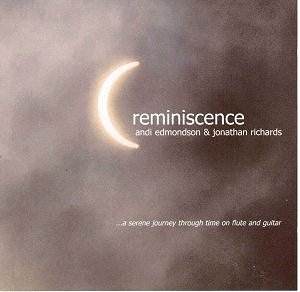Here is music consistently pleasing to ear and
mind. None of it breaks new stylistic ground. None of it slaps
you in the face or bewilders or cheats the expectations naturally
raised by placing flute with guitar. It is in the best sense of
the phrase ‘easy listening’ to which you can attend either with
intent and satisfied concentration or let your thoughts drift
off to some other subject knowing that when you re-engage you
will be welcomed by invention and grace.
The composers all convince you that their centre
of gravity lies with shapely melody succinctly expressed rather
than expansive development and garrulous meandering. So what are
the bounds and limits of the music? You need to think in terms
of Stanley Myers' Cavatina, the woodwind writing in Sean
Davey's Granuaile, Fauré's Pavane, Poulenc's
early chansons, Debussy's Faune. While there are elements
of green ruralia britannica, you will also detect themes
and treatments with a Celtic curve and a Mediterranean gleam.
You do not need to think about jazz, dodecaphony, commercial pop
culture or minimalism.
Lullaby was written originally as a song
for soprano and guitar. The ‘lie’ of the flute writing may well
remind you of Dubh Darra, the first song in Sean Davey’s
shamefully little-known song cycle Granuaile. Romance
has a grave and steady beauty. This is the original format of
the piece. In 1998 it was premiered as Romance for guitar
and orchestra. Greenwood is light and bustling with a flavour
of medieval antiquity and rustic pursuits. It is based on the
melody The Woods So Wild from Playford's Fancy.
Idyll was written in 2002. It too seems to look back to
Medieval courtly ideals through the same lens as Nino Rota in
his music for the 1970s film of Romeo and Juliet. Nocturne
was originally one of a pair of pieces for two guitars. It gracefully
blends music of a character similar to Fauré’s wonderful
Pavane with the style of Villa-Lobos’s set of guitar preludes.
Lastly, Caprice is from 1983 and is buzzingly rife with
Iberian atmosphere: warmth and the cool of the splashing fountains
of the Alhambra. Surely the composers had absorbed the experience
of Tarrega’s guitar music.
The three composers and artists are linked by
a friendship which is apparent from this pleasing and affectionate
anthology.
Rob Barnett
